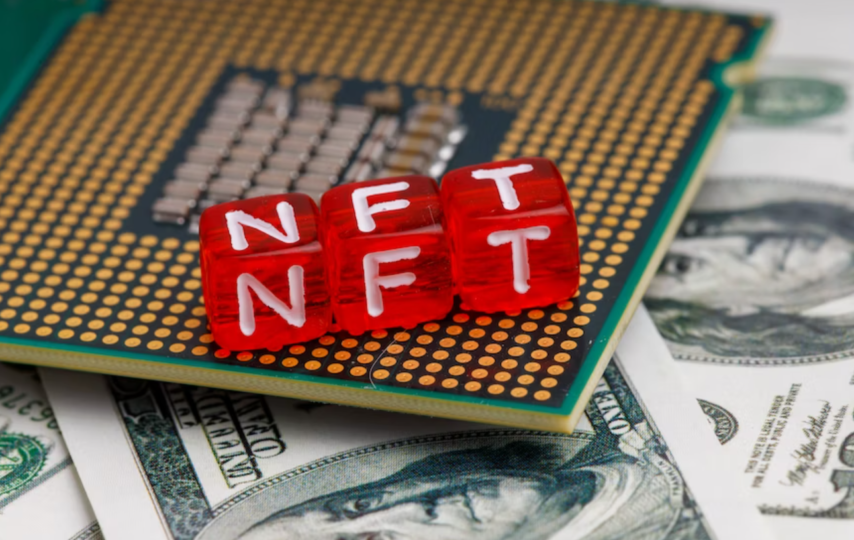The art world was always known for its potential to push boundaries and challenge the status quo. Now, with the rise of non-fungible tokens (NFTs), the art world is breaking new ground once again. NFTs are digital activities that use blockchain technology to confirm ownership and identity, and they are quickly becoming a very popular method for artists to sell their works. Here we take a look at the way NFTs are transforming the world of art and what the future may bring.
What are NFTs?
NFTs are unique digital assets that are verified on a blockchain, which is a decentralized digital ledger. This means that NFTs are not interchangeable like other cryptocurrencies, such as Bitcoin or Ethereum. Instead, each NFT is unique and has its own specific value.
NFTs can be used to represent any type of digital assets, such as images, videos or music. They are especially popular in the art world as they allow artists to sell their digital works as unique as their physical artworks.
You can make your digital assets more appealing to potential buyers and collectors by optimizing keywords and descriptions in your NFT listings. SEO strategy helps your NFTs stand out in the crowded digital marketplace, increasing your chances of success and recognition in the world of non-fungible tokens.
NFTs and Art
Using NFT in the art world has become extremely popular in the last few years. Digital artists particularly have quickly embraced this new technology as a way of monetising their works. With NFT, artists can sell their digital works as unique, which can be a significant source of profit.
NFTs also provide a way for artists to maintain control over their work. As each NFT is unique and verified on a blockchain, the artist can ensure that their work will not be copied or replicated without their permission. This is especially important in the digital age, when digital artworks are all too easily copied and unauthorisedly distributed on the Internet.
NFTs and Collectors
NFTs are not just changing the way artists sell their work; they are also changing the way art collectors approach their collections. With NFTs, collectors can verify the authenticity of the artwork they are purchasing, which is especially valuable for digital artwork. In the past, it was difficult to prove that a piece of digital artwork was authentic, but NFTs provide a way to do so.
NFTs also provide greater transparency in the art market. Because each NFT is verified on the blockchain, it is easy to track the ownership history of a piece of artwork. This helps to prevent fraud and ensure that artists are properly compensated for their work.
Criticism of NFTs
Of course, with any new technology comes criticism. Some people have expressed concern about the environmental impact of NFTs. Because NFTs use blockchain technology, which requires a significant amount of energy to maintain, some have raised concerns about the carbon footprint of NFTs.
Others have criticized NFTs for perpetuating inequality in the art world. Because NFTs are often sold for large sums of money, some worry that only wealthy collectors will be able to afford them. This could lead to a situation where only a small, elite group of collectors control the market for NFTs.
The Future of NFTs
Despite the criticisms of NFTs, it seems clear that they are here to stay. As the art world continues to evolve, NFTs provide an exciting new opportunity for artists and collectors.
In fact, NFTs have already started to change the way art is valued and sold. In March 2021, a digital artwork by the artist Beeple sold at a Christie’s auction for $69 million. This was the first time that a major auction house had sold a purely digital artwork. The sale of the artwork, which was an NFT, was a watershed moment for the art world and showed that NFTs are a viable way for artists to monetize their work.
As NFTs continue to gain popularity, it is likely that we will see more and more artists using this technology to sell their work. This could lead to a democratization of the art world, where artists are no longer dependent on galleries and auction houses to sell their work. Instead, they can sell their work directly to collectors through NFT marketplaces.
The future of NFTs is not without its challenges, however. As more and more artists and collectors enter the NFT market, it is likely that we will see a proliferation of different marketplaces and platforms. This could lead to fragmentation in the market and make it more difficult for artists to reach a wide audience.
Despite these challenges, the rise of NFTs is an exciting development for the art world. It is changing the way we think about art and value, and it is providing a new way for artists to monetize their work. As NFTs continue to evolve, it will be interesting to see how they are used in other areas beyond art, such as music, literature, and even advertising formats.
In conclusion, NFTs are transforming the art world in ways that we could not have imagined just a few years ago. They are providing new opportunities for artists to sell their work and for collectors to acquire unique, one-of-a-kind pieces. Despite the challenges that NFTs face, they are here to stay, and they will continue to change the way we think about and value art.







